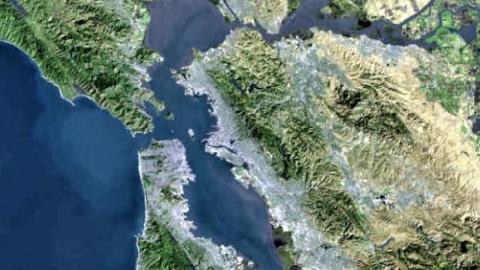
Guided by input from more than 20,000 Bay Area residents, nearly four years of planning work came to a close Oct. 1 with the final release of Plan Bay Area 2050.
Defined by strategies for housing, economic growth, transportation and the environment crafted to make the Bay Area more resilient and equitable over the next 30 years, Plan Bay Area 2050 charts a course to make our nine-county region more affordable, connected, diverse, healthy and vibrant for all its residents through 2050 and beyond.
Developed by the Bay Area’s two regional planning agencies, the Metropolitan Transportation Commission (MTC) and the Association of Bay Area Governments (ABAG), Plan Bay Area 2050 lays out a $1.4 trillion vision for policies and investments to help all residents of the Bay Area’s nine counties — Alameda, Contra Costa, Marin, Napa, San Francisco, San Mateo, Santa Clara, Solano and Sonoma. The final plan, as well as the associated Implementation Plan, Environmental Impact Report and all supplemental reports, is available to read on planbayarea.org.
The Metropolitan Transportation Commission and ABAG Executive Board at a special joint meeting on October 21 will consider Plan Bay Area 2050 for final adoption. If adopted, it will become the Bay Area's official long-range plan for housing, economic development, transportation and environmental resilience for the next four years. While prior iterations of Plan Bay Area focused on transportation and housing, this plan expands in scope to introduce strategies for long-term economic development and environmental resilience, while meeting all federal and state requirements.
The heart of Plan Bay Area 2050 is 35 strategies across the four key elements of housing, the economy, transportation and the environment. These strategies are public policies or investments that can be implemented in the Bay Area at the city, county, regional or state level. Equity is interwoven into each strategy, from housing strategies that would produce more than one million new permanently affordable homes by 2050 to transit-fare reforms that would reduce cost burdens for riders with low incomes. Strategies are also crafted to be resilient to future uncertainties, including protections against climate hazards like sea level rise and wildfires, and with paths to economic mobility through job training and a universal basic income.
Multiple cycles of meticulous analysis and rigorous public engagement informed Plan Bay Area 2050. Many voices contributed to the plan, including members of the public; city, county, regional, state and federal agencies; and partners in the private, non-profit and advocacy spheres. Engagement was fundamental to shaping the plan, and the COVID-19 pandemic required innovation and flexibility through new online methods, enabling more diverse voices to weigh in at multiple decision points.
Plan Bay Area 2050 neither funds specific infrastructure projects nor changes local policies. Cities and counties retain all local land use authority. Plan Bay Area 2050 does identify a potential path forward for future investments, as well as the types of public policies necessary to realize a future growth pattern for housing and jobs. Ultimately, Plan Bay Area 2050 reflects a shared vision that cannot be implemented by any single organization or government agency. Only through partnership with local, state and federal governments, as well as with businesses and non-profit organizations, will the plan’s strategies come to fruition. Toward this end, Plan Bay Area 2050’s Implementation Plan focuses on tangible actions that MTC, ABAG and their partners can take within the next five years to work toward the plan’s long-range vision.
To learn more about the Plan Bay Area process, visit planbayarea.org.



Submit your comment
In order to receive a reply to your comment, please provide an email address.